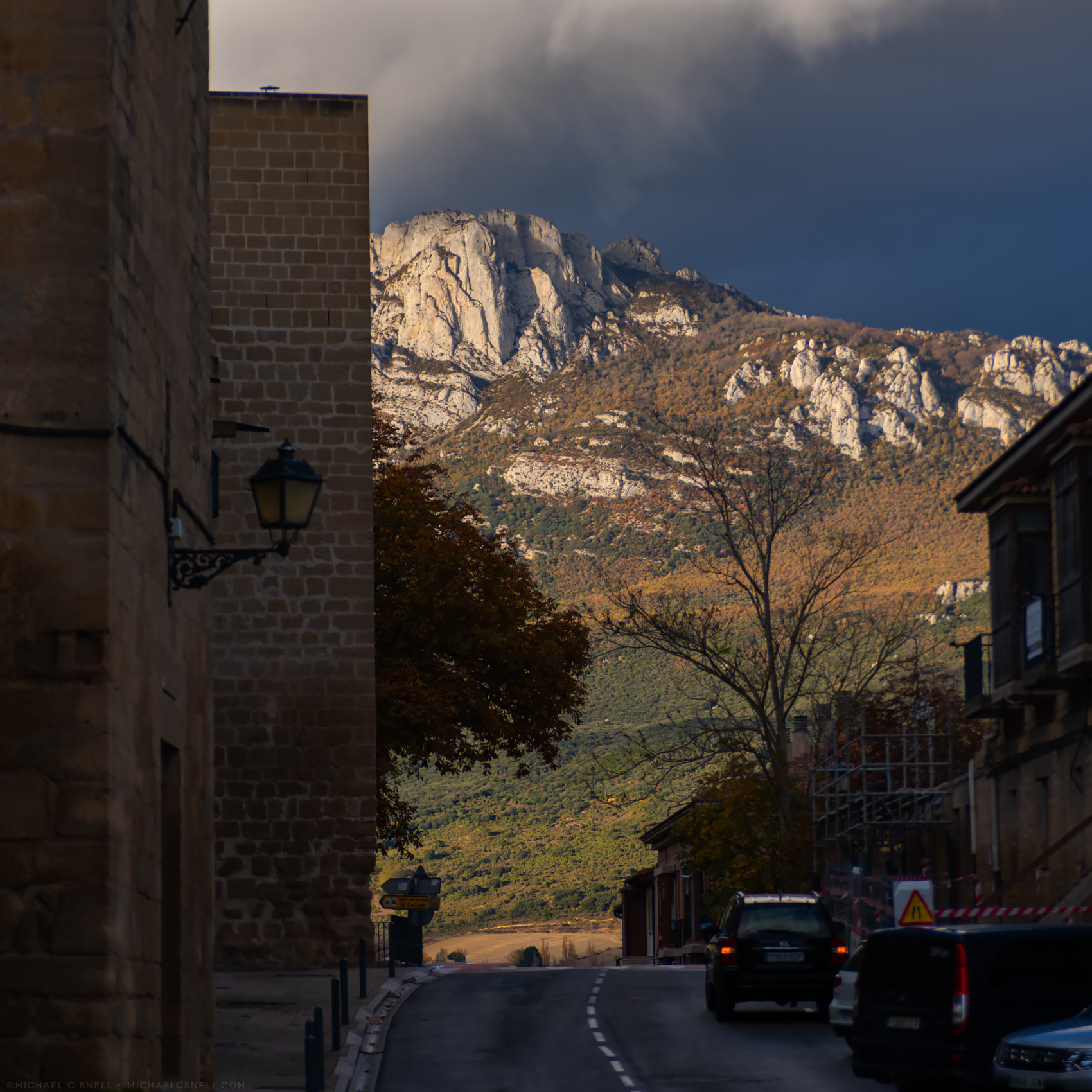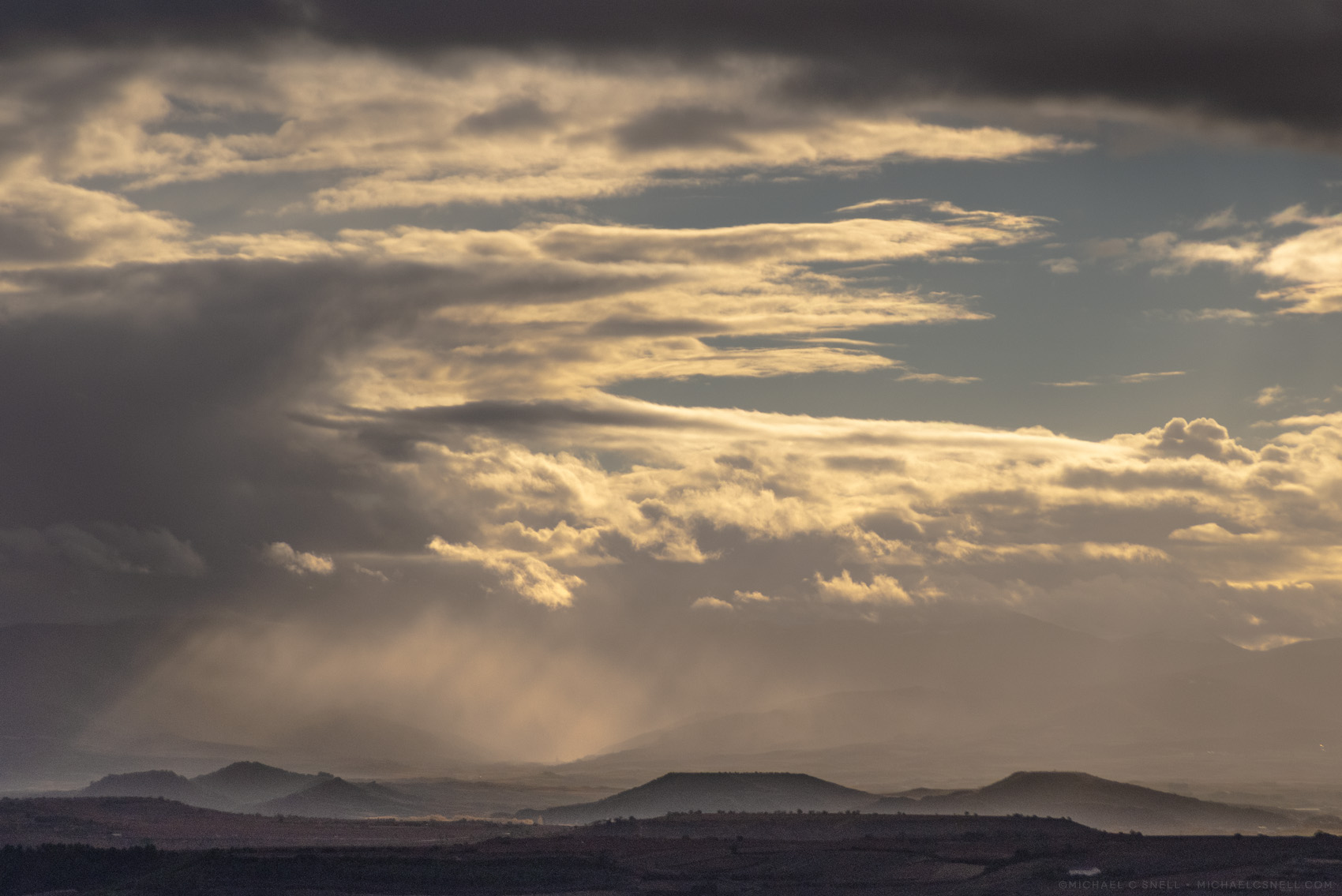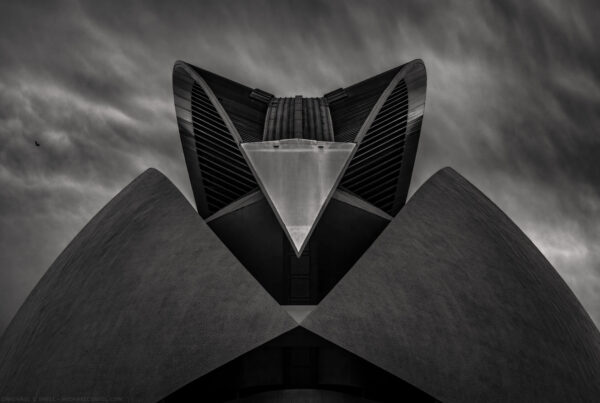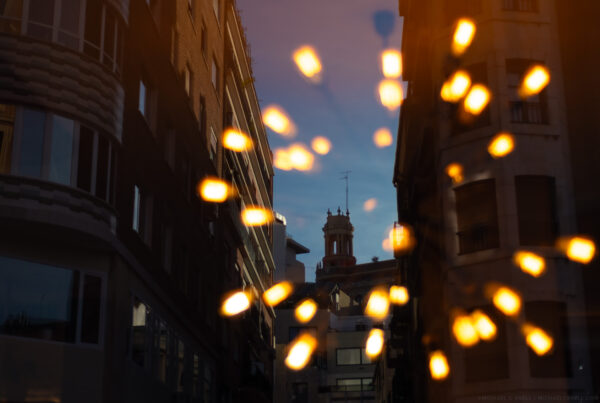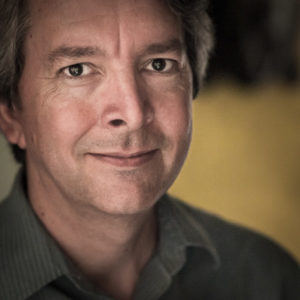As my all-to-brief introductory exploration of Basque County wound down, we headed inland, bound for Laguardia, Spain. We entered a region devoted to wine and passed field after field of vines turning various colors as Autumn set in. It was raining lightly, but every now and again the sunlight would break through and illuminate the Cantabrian Mountians to the north.
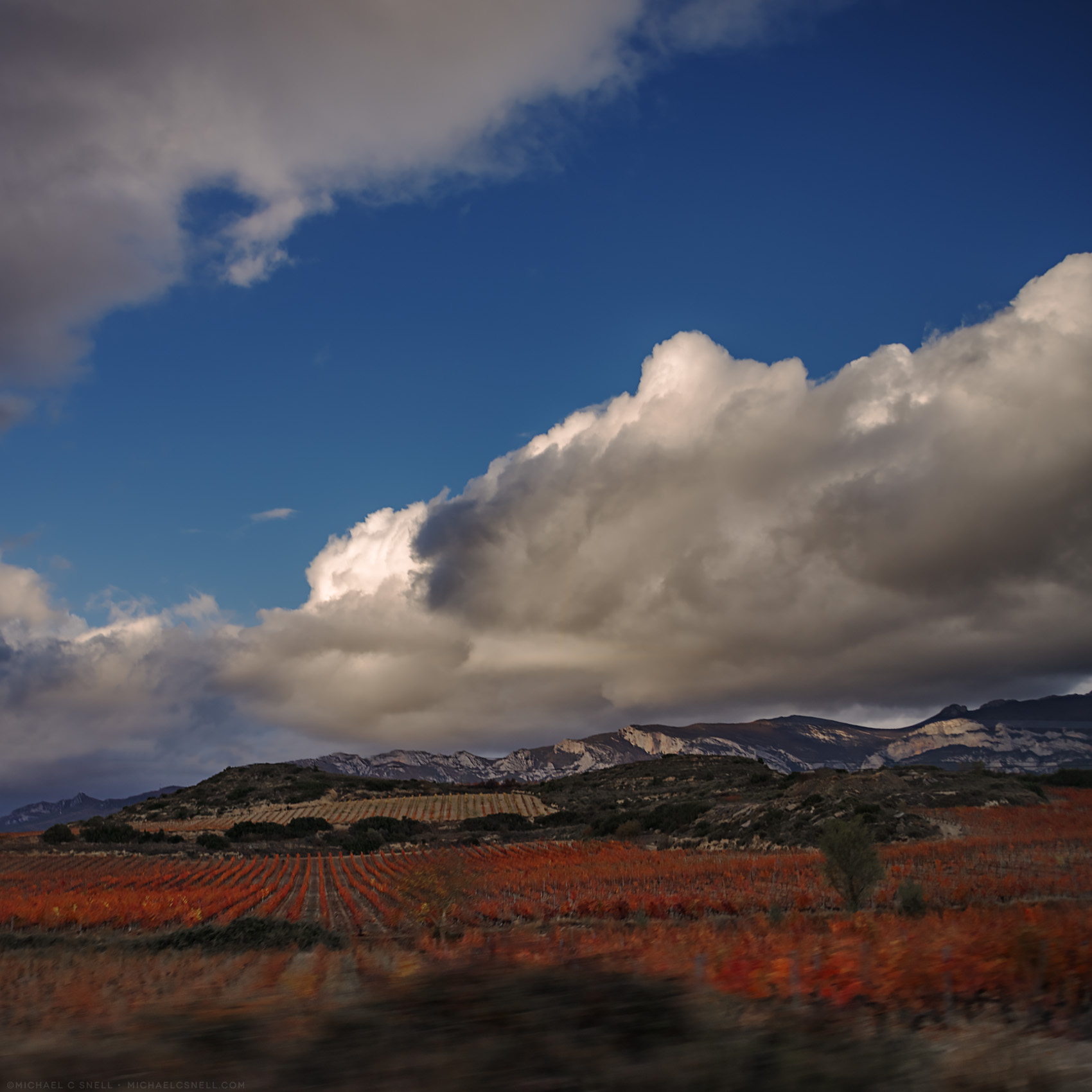
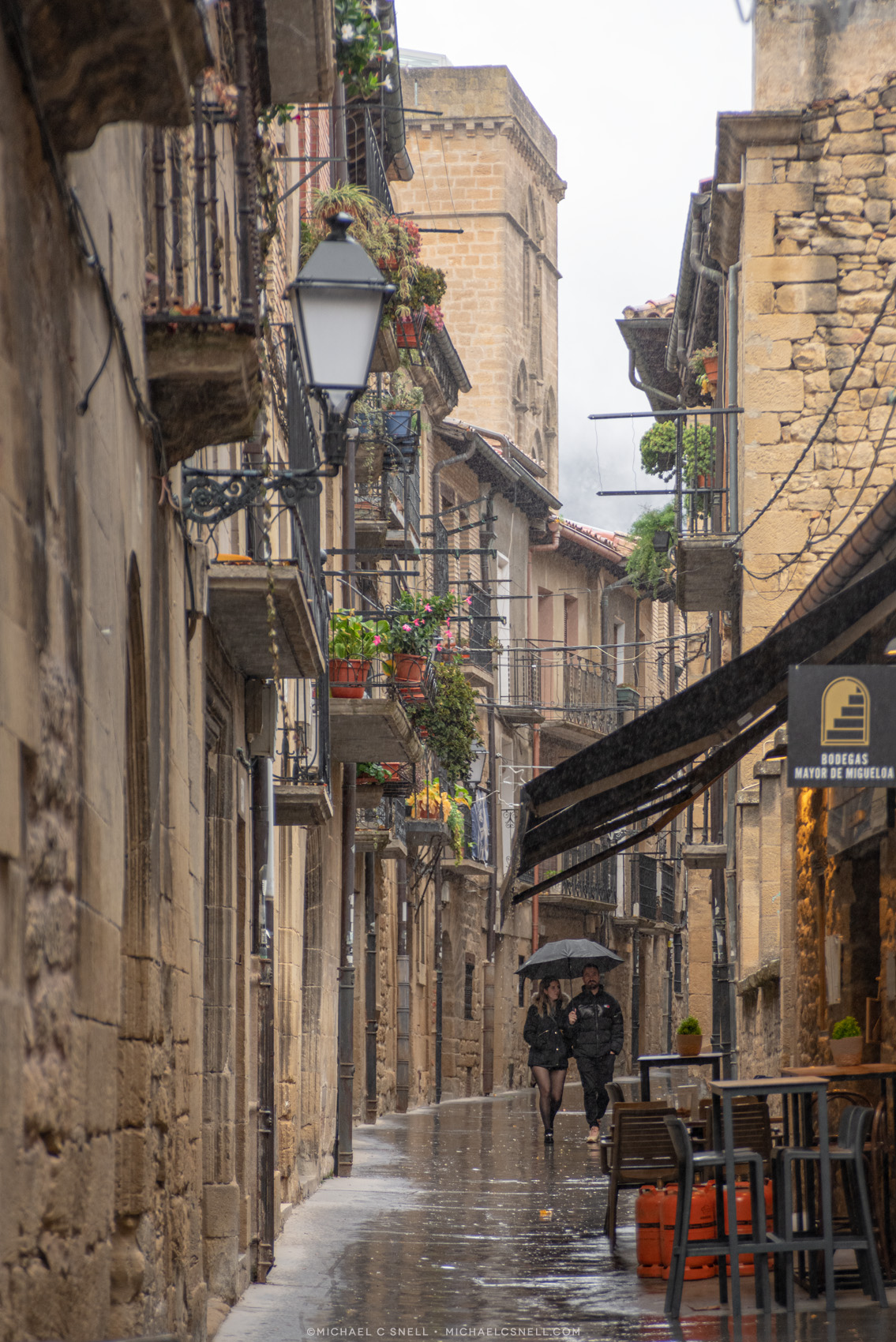
Often called one Spain’s most beautiful villages, Laguardia currently has a population of around 1500. Its high, stone walls are pierced by five gates. Once inside, you are lost in another world. We walked the narrow pedestrian streets meandering between medieval stone buildings. Our path ended at the door of the Church of Santa María de los Reyes.
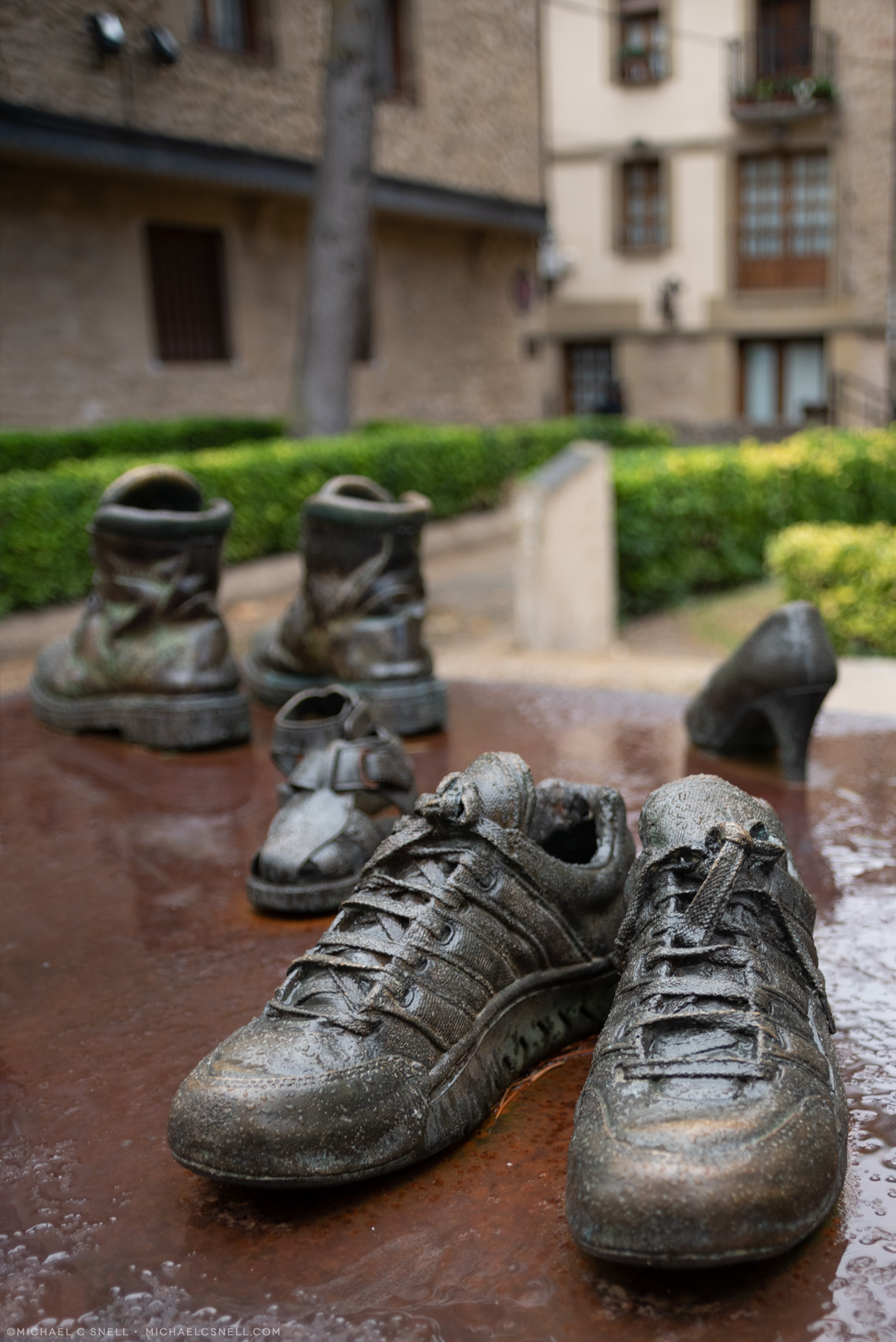
“Travelers” is a set of bronze sculptures on two tables in the square outside the church. One table contains shoes and the other bags and other items associated with travel.
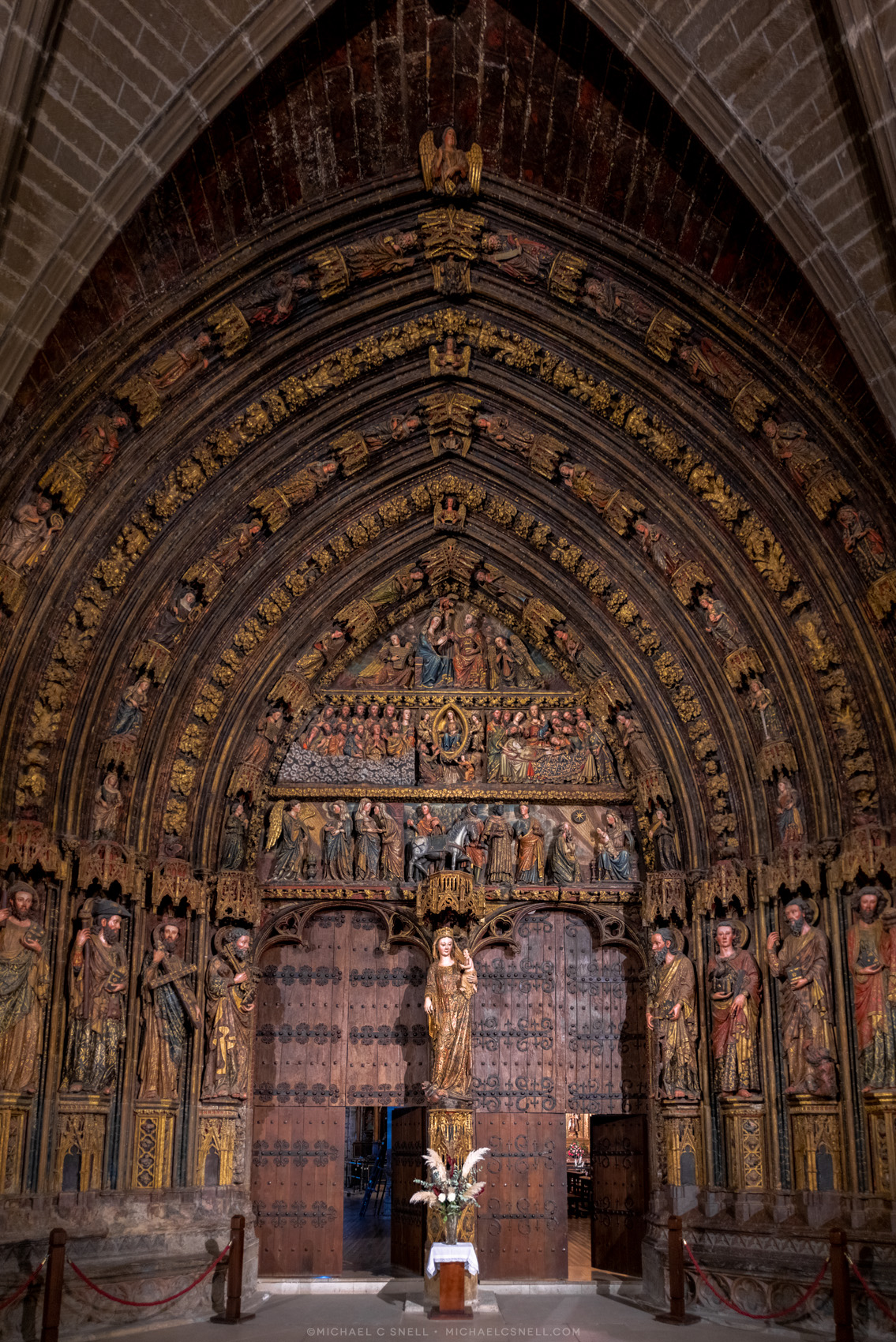
Inside the church, the polychrome portico is the sanctuary’s most famous feature. Carved in stone, it dates to the 14th century. The colors were added during the 17th century.
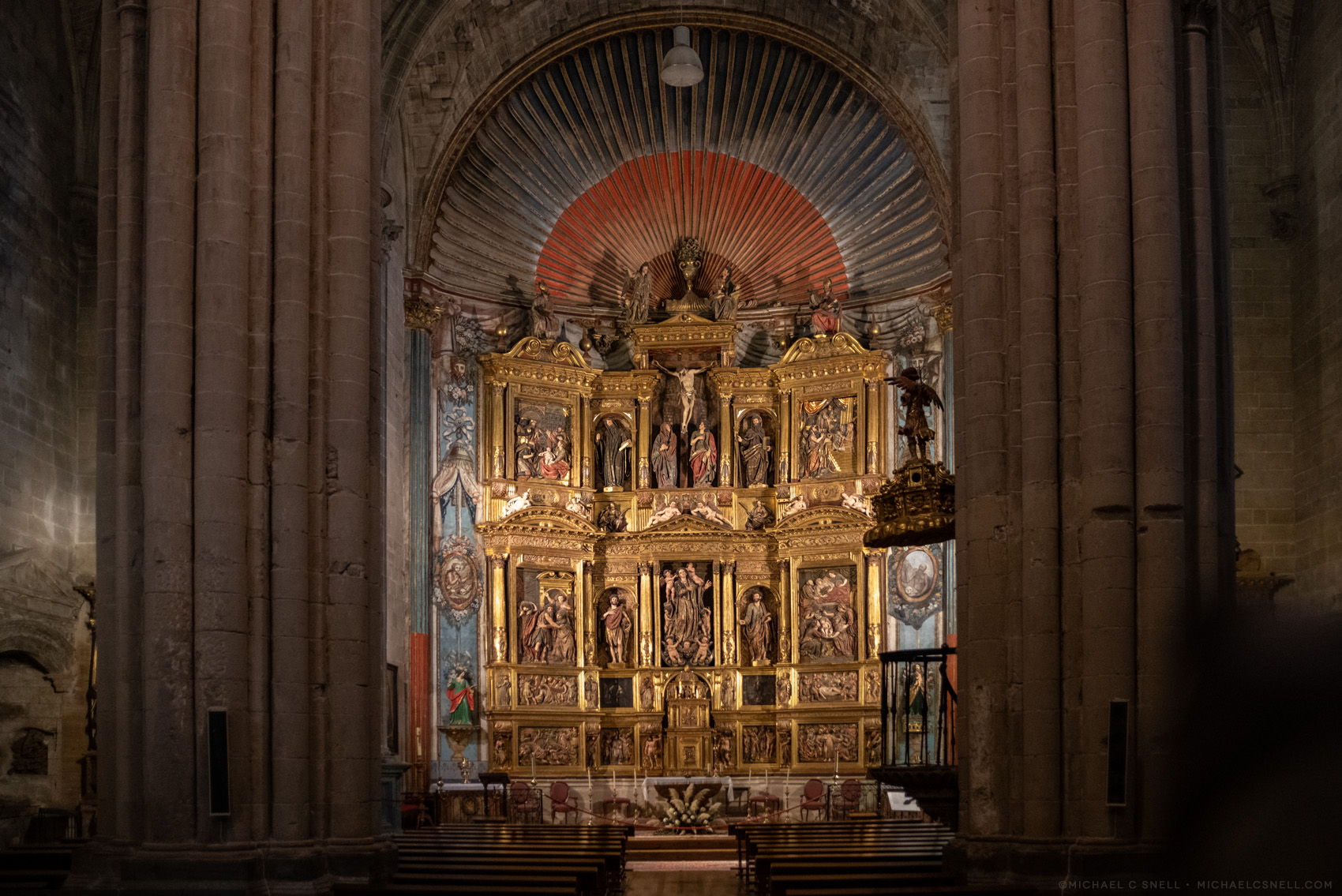
The main altarpiece in the Church of Santa María de los Reyes was made by Juan de Bascardó in the 17th century.

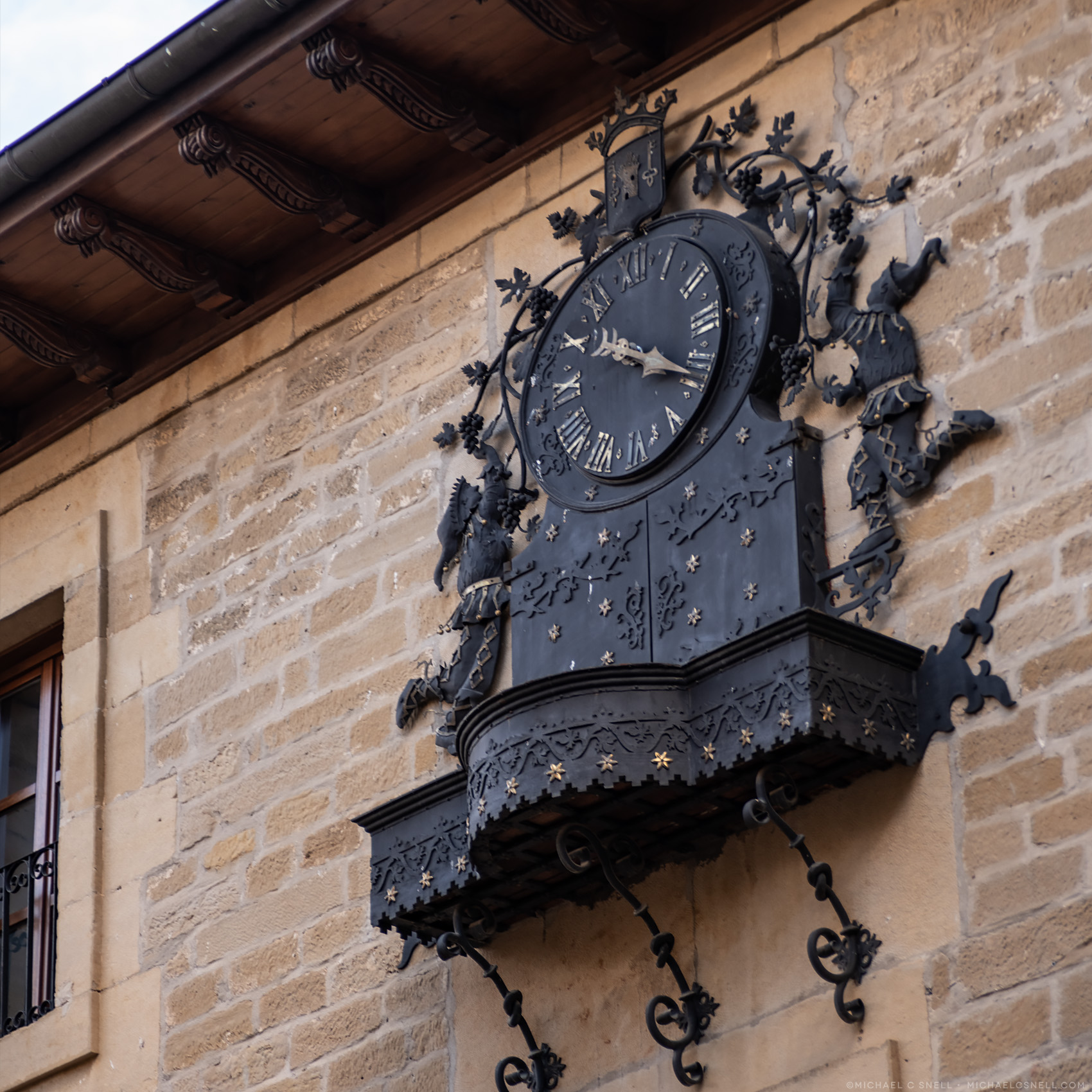
The Carillon de Laguardia, or “Dancing Clock”, in the Plaza Mayor evidently puts on a show at certain times of the day with small, dancing figures. Alas, not while I was watching.
